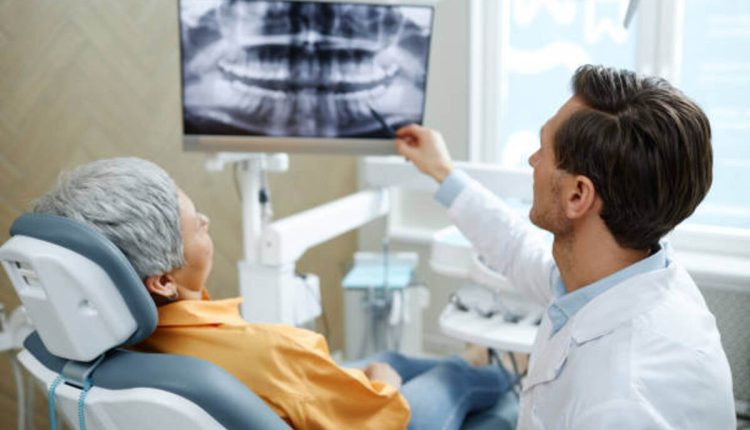Sterilization equipment is an essential element in any dental clinic, and finding an efficient, quick, and straightforward method will provide results that can be measured with biological indicators. What do you consider about اتوکلاو دندانپزشکی.
Celitron’s Azteca AC, medium steam sterilizers, are ideal for small dental clinics. They feature pre-vacuum systems to remove air and ensure maximum performance.
Steam Autoclaves
Steam autoclaves are one of the cornerstones of dental sterilization equipment, serving as industry standards to guarantee proper hygiene at your clinic.
Many medical and dental offices use tabletop autoclaves about the size of a microwave oven for sterilization purposes, while hospitals tend to utilize larger autoclaves capable of sterilizing multiple instruments simultaneously.
Tuttnauer and Vic Dental offer dental autoclaves known for their user-friendly design. They offer various sizes of autoclaves with features to meet individual needs, such as automatic cycle end alarms, decontamination processes, and automatic cycle alarms.
Dental sterilization is essential to patient health and safety, which is why following proper maintenance guidelines is vital. This will ensure your dental autoclave operates efficiently and prolongs its lifespan!
Erbsville Dental takes great pride in our comprehensive sterilization process and superior equipment that has been designed to safeguard patients’ health and well-being. We pay careful attention to the small details so you can rest easy knowing your safety is our top priority; adhering to strict infection control guidelines, as well as being confident of our sterilization procedure, is always upheld.
Dry Heat Sterilizers
Dry heat sterilization can be an ideal option for facilities without access to an autoclave to sterilize their equipment since it uses high temperatures over an extended period of time to eliminate bacteria, viruses, and spores from materials like rubber, plastics, and metals. Unfortunately, it should not be used on heat-sensitive materials such as rubber.
Autoclaving items quickly and efficiently is becoming an increasingly convenient method, especially for medical devices that cannot be penetrated by steam. Autoclaves also require plumbing connections and drains that need to be maintained; auto-sterilizers need less maintenance overall and make sterilizing devices such as dental microscopes easier.
There are two distinct kinds of dry heat sterilizers: static hot air type and forced hot air type. Static dry heat sterilizers resemble oven-like devices equipped with heating coils on their underbelly; hot air rises upward through gravity convention and maintains uniform temperatures in their chamber. Meanwhile, forced-air-type dry heat sterilizers use a blower that circulates heated air at a much faster velocity, providing faster energy transfer to instruments.
Both types of sterilizers require power sources to produce the steam necessary for operation and an environment in which it can be stored safely.
Ultrasonic Cleaners
Ultrasonic cleaners use sound waves (the same ones that produce ultrasound images) combined with cleaning solvent to eliminate contaminants from equipment surfaces effectively. High frequencies generate billions of microscopic bubbles that implode when impacting surfaces – this process, known as cavitation, provides an efficient scrubbing action that removes residues and contaminants before disinfection or sterilization processes take place.
Ultrasonic cleaners make cleaning much more straightforward, eliminating tedious hand scrubbing while simultaneously decreasing staff exposure to potentially infectious materials. According to professional organizations, including the American Dental Association, Food and Drug Administration, and Centers for Disease Control and Prevention, ultrasonic cleaning baths should be used before sterilization to clean reusable dental instruments.
When selecting an ultrasonic cleaner, look for one that provides efficiency, quality, and safety. Check the manufacturer’s recommendations regarding cleaning solution before testing its ability to remove debris and contaminants from dental instruments effectively. A unit equipped with a transparent tank makes monitoring easier; agitation or bubbles indicate whether its cleaning cycle is working.
After each cycle, the Elma Sonic P30SE’s side-mounted knob allows you to drain away the used cleaning solution. Non-draining models offer even cleaning action on all items at the same time.
Portable Sterilizers
Dental instruments exposed to saliva, blood, or other infectious substances during treatments can carry microorganisms from one patient and infect another patient. Sterilization equipment helps eliminate bacteria from both the surface and interior of these dental tools to avoid cross-infection during procedures.
Moisture-heat sterilization, the most frequently employed sterilization technique, quickly reaches temperatures up to 270 degrees Fahrenheit and is both nontoxic and cost-effective; however, its use has the potential to have adverse effects on certain materials such as corrosion of stainless steel handpieces and laryngoscopes, or increased plaster cast mold hardening times (5.6 times greater).
Portable sterilizers use dry heat to eliminate moisture from sterilization processes, making them ideal for small surgical and dental instrument sets. They can be found in hospitals, health care clinics, and rural clinics and feature chemical indicators to monitor sterilization. They are also designed with safety features such as self-locking doors and automatic release mechanisms that minimize operator errors.
Researchers at NAMRU-SA are creating a portable ozone sterilizer equipped with UV radiation that disinfects articles while simultaneously monitoring microbe content changes on items’ surfaces. Such an appliance would prove invaluable for first responders and forward surgical teams operating in battle zones or remote or austere environments where dental and medical services may not be readily accessible.
